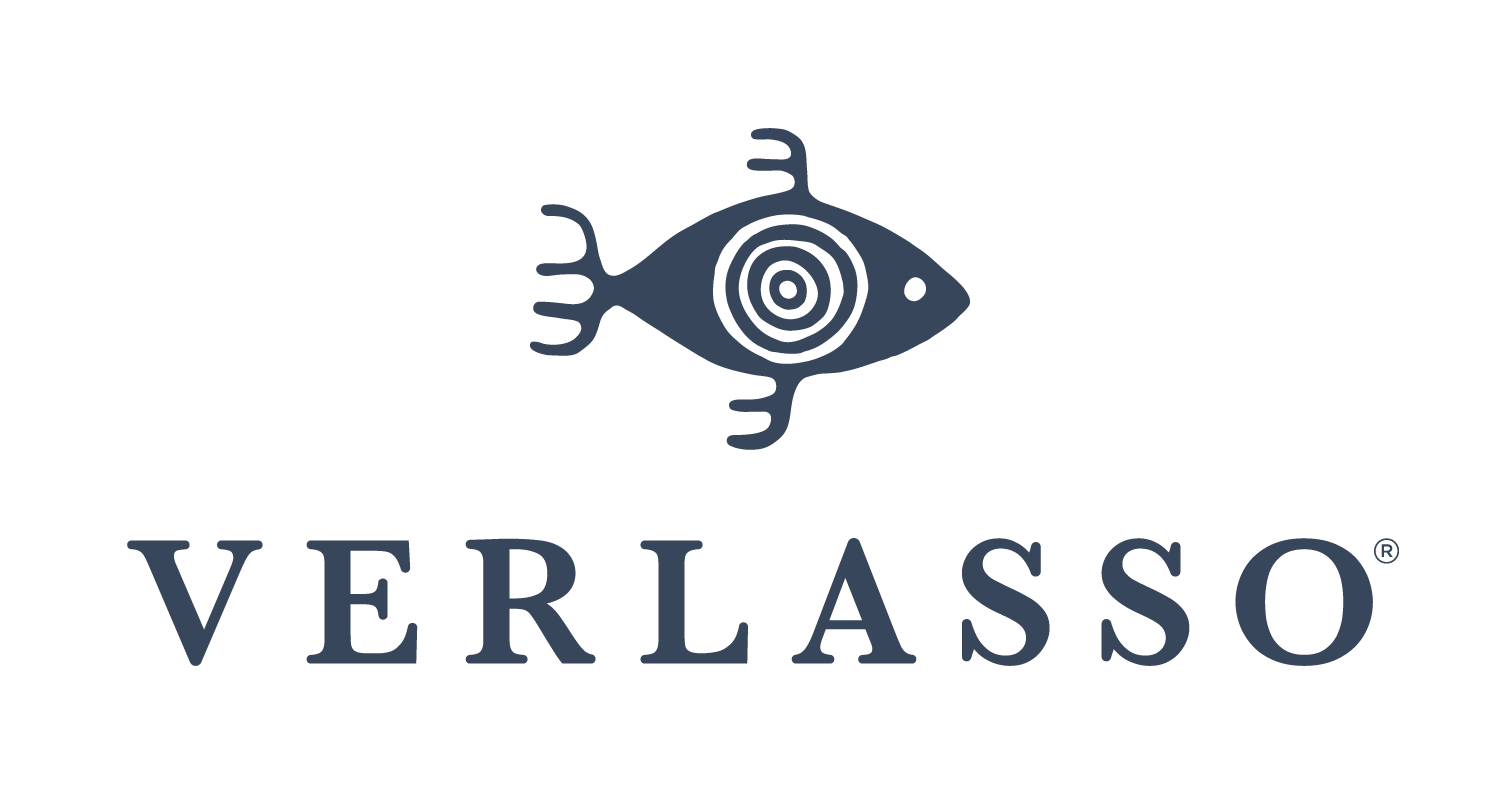Baking and roasting are two cooking methods often used interchangeably because they are both done in the oven.
Both are suitable for lighter cuts of meat such as fish. Baking requires a lower temperature (usually around 350°F) and allows fish to cook slowly from the inside out, enhancing its natural flavors. Oftentimes, baked fish is first browned in a sauté pan and then transferred to the oven to finish.
Roasting uses a higher oven temperature (400°F and above) and involves “carryover cooking,” a process where fish continues to cook after being removed from heat. Because of the high heat, roasting intensifies flavors and creates a browned, caramelized surface. To keep fish from drying out, basting with the natural juices of the fish, butter, wine or lemon juice is often recommended.
How to Bake Verlasso Salmon
Preheat the oven to 350°F.
Line a baking pan with aluminum foil.
Rinse the salmon and pat dry.
Heat a sauté pan to medium-high. Add enough oil or butter to cover the bottom of the pan. Place the salmon skin side down and sear for 2-3 minutes until the skin is brown.
Transfer the fish to the baking pan. Add desired vegetables or seasonings.
Bake the salmon uncovered until opaque in the center, approximately 20 minutes.
Remove from the oven and let rest for no more than 5 minutes. Serve immediately.
How to Roast Verlasso Salmon
Preheat the oven to 400°F.
Line a roasting pan with aluminum foil.
Rinse the salmon and pat dry.
Place skin side down in the pan and brush with olive oil or melted butter. Add desired vegetables or seasonings.
Roast the fillet uncovered until browned on the outside and nearly opaque in the center, approximately 15 minutes.
Remove from the oven and let rest for no more than 5 minutes. Serve immediately.
Featured Recipe
Herb Crusted Verlasso Salmon with Fennel, Picholine Olives and Oranges
Serves 6
• 2 large oranges
• 2 small fresh fennel bulbs; trimmed, halved vertically, and sliced into half-inch wide strips
• 1 cup Picholine olives, pitted and cut in half (found in the olive section at specialty grocery stores)
• 1 cup fresh Italian parsley leaves, coarsely chopped
• Extra-virgin olive oil
• Kosher salt* plus more for salmon
• 2 teaspoons ground cumin
• 6 tablespoons Herbs de Provence
• Freshly ground pepper
• 1/4 cup olive oil
• 6 center-cut Verlasso salmon fillets, skin removed
Preheat the oven to 450° F.
Cut off the top and bottom ends of the oranges. Stand on one flat side. Starting at the top of fruit, cut off all the peel and white pith, following the curve of the fruit. Working over a bowl, cut between the membranes, releasing the orange segments; squeeze any juice into the bowl. Transfer the segments to another bowl and chill.
Cut off the fennel stalks as close to the bulb as possible. Cut the bulb in half from top to bottom. Lay each half with the flat, cut-side down. Cut both of these pieces in half. The bulb should now be in equal quarters. Remove the core from each quarter. Slice vertically into half-inch wide strips.
Combine the orange segments,** fennel and parsley in a large bowl. Add the olives, drizzle with the olive oil and season with salt. Toss together.
On a sheet of waxed paper, mix together the ground cumin, Herbs de Provence, salt and pepper. Roll the salmon fillets in the herb mixture, patting gently so the coating adheres to the fish.
Heat the oil over medium-high heat in an ovenproof skillet large enough to hold all the fillets in one layer. Sear on both sides for 1-2 minutes, turning once very gently, ending skin side down. Place the skillet in the center of the oven uncovered and roast 6-10 minutes, depending on the thickness of the fillets, until the salmon is just cooked. Remove from the oven.
To serve, place the fennel salad on individual plates and top with a salmon fillet.
Sustainability Tips:
*Kosher salt is derived from seawater and underground sources. It contains no preservatives and is minimally processed. Because of its purity, you use less when cooking.
**Orange peels can be placed in the garden to add extra nutrients to plants. They also help reduce the amount of ants in your home.

